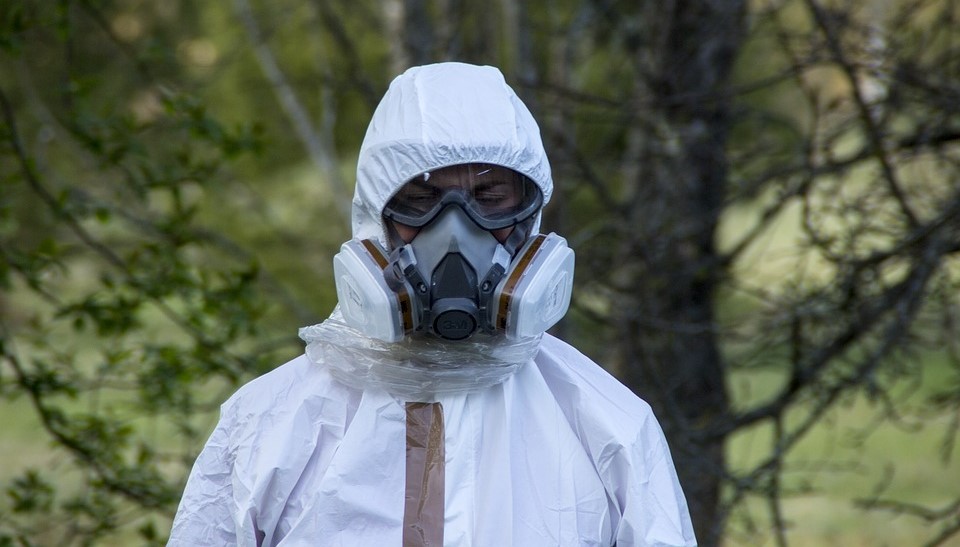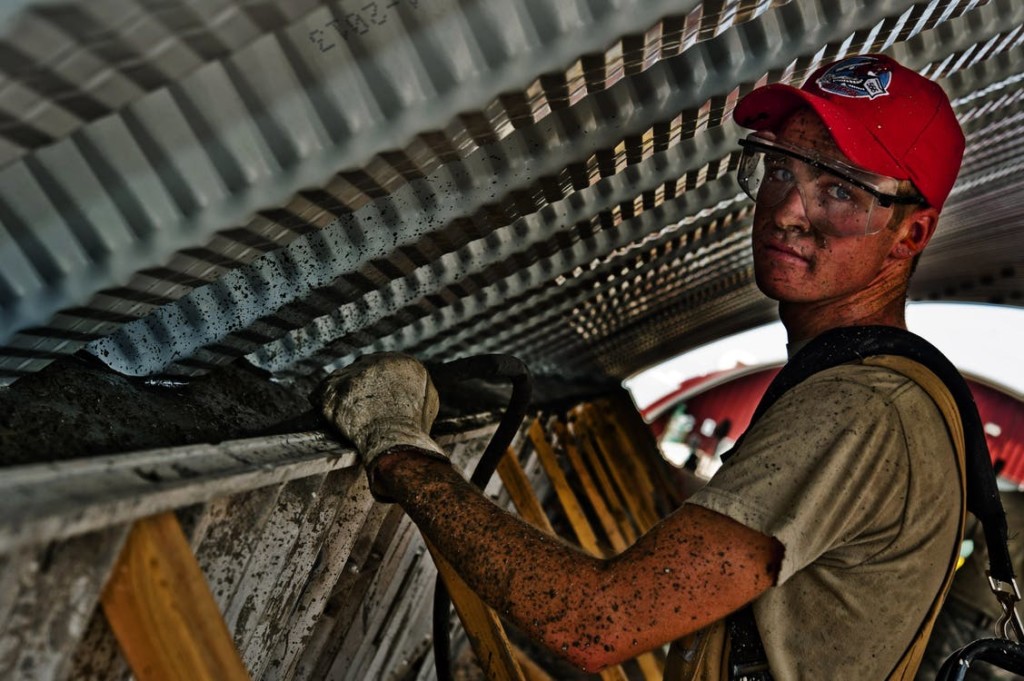In an era where workplace safety is paramount, understanding and mitigating the risks associated with asbestos exposure is crucial.
Once hailed for its versatility, asbestos exposure is now recognized as a silent threat in many industries.
In this article, we delve into the modern-day risks posed by asbestos and explore how ACUTE Safety equips professionals with the knowledge and skills to navigate these hazards effectively. From its origins to contemporary safety measures, join us as we uncover the essentials of asbestos safety in today’s work environment.
In addition to Asbestos Basic Awareness Training, ACUTE Safety also offers industry-standard courses on essential topics like Working at Heights, HAZWOPER, Lift Truck Operation, and much more.
Contact us today for more details.
Asbestos Exposure
1. What is Asbestos?
Asbestos looks different based on how it’s processed. | Image Source
Asbestos is a naturally occurring mineral composed of thin, microscopic fibers, and is a known carcinogen. Asbestos fibers are highly durable, heat-resistant, and so they have been historically prized for their versatility in various industries.
Historically, asbestos has been used in a wide range of products, including building materials, insulation, automotive parts, and textiles.
Types of Asbestos
There are six main types of asbestos minerals classified into two mineral groups: serpentine and amphibole.
Chrysotile, a serpentine mineral, is the most common type of asbestos and accounts for approximately 95% of asbestos found in buildings in the United States.
Amphibole asbestos minerals include amosite, crocidolite, tremolite, anthophyllite, and actinolite.
Properties and Characteristics
What makes asbestos particularly concerning is its fibrous nature. When disturbed, asbestos fibers can become airborne and easily inhaled, posing significant health risks. These fibers are virtually indestructible and can remain suspended in the air for extended periods, making exposure a persistent threat.
Health Risks

Extended asbestos exposure can lead to cancer and respiratory issues.
Exposure to asbestos fibers is associated with a range of serious health conditions, including lung cancer, mesothelioma, and asbestosis.
These diseases often have long latency periods, meaning symptoms may not manifest until years or even decades after initial exposure.
Asbestos-related illnesses can be debilitating and, in many cases, fatal, highlighting the critical importance of asbestos safety measures.
2. History of Asbestos
Because of its durability and fire-resistant characteristics, asbestos has been used for a variety of applications for centuries:
Ancient Uses
The history of asbestos dates back thousands of years, with evidence of its use by ancient civilizations such as the Egyptians and Greeks. Its fire-resistant properties made it ideal for various applications, including burial cloths, pottery, and even as insulation for dwellings.
Industrial Revolution and Expansion
The widespread industrialization of the 19th century saw a significant increase in asbestos production and usage.
This was when asbestos production really took off, as the substance became a staple material in manufacturing, construction, and shipbuilding industries due to its affordability, durability, and fire-retardant qualities.
Height of Popularity

An example of an older garage roofed with sheets containing asbestos. | Image Source
During the 20th century, asbestos reached the height of its popularity, becoming a ubiquitous component in countless products and structures worldwide. Its versatility led to its inclusion in everything from building materials like insulation and roofing to consumer goods such as textiles and automotive parts.
Emergence of Health Concerns
By the mid-20th century, reports of asbestos-related illnesses began to surface, raising concerns about the health hazards associated with asbestos exposure. Studies linked asbestos exposure to lung cancer, mesothelioma, and other respiratory diseases, sparking increased scrutiny and regulation of asbestos use in many countries.
Regulation and Decline
In response to growing awareness of the health risks posed by asbestos, governments around the world implemented stricter regulations and guidelines governing its use and disposal.
Since 1983, asbestos has been banned in 39 countries, leading to a decline in its usage across various industries.
In 2018, Canada took further measures to protect against asbestos exposure in the “Prohibition of Asbestos and Products Containing Asbestos Regulations.”
Legacy and Ongoing Challenges
Despite regulatory efforts to limit asbestos exposure, the legacy of its widespread use persists today.
Many older buildings and structures still contain asbestos-containing materials, posing ongoing risks to workers and the general public. Asbestos abatement and remediation efforts continue to be a priority in ensuring workplace safety and environmental protection.
3. How to Be Safe With Asbestos

Proper PPE and filtered breathing are essential when working around asbestos.
Identifying Potential Exposure
First and foremost, understanding where asbestos may be present is crucial for safety. Conducting thorough assessments of workplaces, buildings, and materials is essential to identify potential asbestos-containing materials (ACMs).
These materials can include insulation, ceiling tiles, floor tiles, roofing shingles, and more. Any suspicion of ACMs should prompt immediate action and the involvement of qualified professionals.
Minimizing Disturbance
Preventing the disturbance of asbestos-containing materials is key to reducing exposure risks. Implementing strict protocols for handling, removal, and disposal of ACMs is vital.
Encouraging employees to avoid unnecessary actions that may disturb asbestos, such as drilling, sanding, or cutting, can significantly mitigate exposure risks.
Personal Protective Equipment (PPE)
When working in environments where asbestos exposure is possible, proper PPE is non-negotiable.
Respiratory protection, such as N95 respirators or higher-grade masks, is essential to prevent inhalation of asbestos fibers.
Additionally, wearing disposable coveralls, gloves, and shoe covers can help minimize skin contact with asbestos-containing materials.
Engineering Controls
Implementing engineering controls is an effective way to minimize asbestos exposure. This includes using wet methods to suppress dust generation during asbestos removal or encapsulation techniques to seal ACMs in place. Employing local exhaust ventilation systems can also help capture airborne asbestos fibers at the source, further reducing exposure risks.
Training and Education

Proper training is important for keeping you and your staff safe.
Ensuring that all personnel receive comprehensive training on asbestos safety protocols is paramount.
Employees should be educated on the risks associated with asbestos exposure, proper handling techniques, and emergency procedures.
Regular refresher courses and updates on safety guidelines are essential to keep knowledge current and reinforce safety culture within the workplace.
4. Asbestos Safety Training

ACUTE is equipped to properly train your staff on how to avoid dangerous asbestos exposure.
Supervisor Responsibilities
Supervisors play a critical role in ensuring the safety and well-being of their staff when it comes to asbestos exposure. It is their responsibility to provide comprehensive training and education on asbestos hazards and safety protocols.
ACUTE Safety’s Asbestos Awareness & Abatement courses offer a robust curriculum designed to equip supervisors with the knowledge and tools necessary to create a safe work environment.
Worker Empowerment
Workers in Canada have the right to refuse work they believe poses a serious risk to their health and safety, including tasks involving potential asbestos exposure.
In order to know how to identify dangerous asbestos hazards, workers should be adequately trained and should understand proper safety procedures.
Recognizing Warning Signs
As part of asbestos safety training, employees learn to recognize warning signs of asbestos-containing materials and potential exposure scenarios.
This includes understanding common locations where asbestos may be found, identifying damaged or deteriorating materials, and recognizing symptoms of asbestos-related illnesses.
By empowering workers with this knowledge, ACUTE Safety’s training courses enable proactive risk mitigation and hazard prevention strategies.
Emergency Response Preparedness
In the event of an asbestos-related emergency, such as accidental disturbance of ACMs or unexpected exposure, prompt and effective response is crucial.
ACUTE Safety’s training emphasizes the importance of having well-defined emergency procedures in place, including evacuation protocols, proper use of personal protective equipment (PPE), and communication strategies.
By ensuring that workers are prepared to respond swiftly and effectively to asbestos incidents, supervisors can minimize potential harm and ensure the safety of all personnel.
Ongoing Education and Compliance

Workers renovating old buildings are at higher risk of asbestos exposure.
Asbestos safety is not a one-time effort but an ongoing commitment to education, compliance, and continuous improvement.
Supervisors must prioritize regular training updates, refresher courses, and compliance audits to ensure that asbestos safety protocols remain current and effective.
ACUTE Safety’s comprehensive training programs, coupled with regular updates and support, enable organizations to maintain a proactive approach to asbestos safety and uphold regulatory compliance standards.
Get Professional Asbestos Safety Training from ACUTE Safety

If you or your workers are at risk of asbestos exposure in your industry, book a course with ACUTE.
ACUTE provides comprehensive health and safety training, on-site safety services, and consulting services.
Here are some of the benefits of working with ACUTE:
- Open Door Instructor-Student Partnership – ACUTE’s expert training staff foster relationships with clients and create an open environment for questions and concerns.
- Serving Your Team and Industry – With a vast array of clients in manufacturing, construction, health, academic, and government sectors, ACUTE brings the best safety practices from all across the spectrum to every training session.
- 100 Years Combined Experience – With over 100 years of combined experience, our staff offers more than theoretical or abstract ideas: ACUTE offers practical safety solutions!
- Track Record of Success – With a rating of 4.9/5 stars on Google reviews, ACUTE has a commitment to providing grounded teaching at a consistent high quality.
Contact ACUTE Safety today to learn more about health, safety, and the environment.
What Our Customers Are Saying…
We were referred to ACUTE on behalf of our employer for an n95 mask fitting – the staff here are professional, personable, and informative.
I’d come back here for any safety-related training in a heartbeat.
Acute has been a staple in supporting my companies over the years and have always delivered quality and dependable service. Training programs are top shelf and a great facility for practical application. couldn’t recommend them more. keep up the great work folks.
Outstanding service provided by Acute, right from the customer support end, right through to the delivery of the session. Always professional, quick to respond, and always delivering services that exceed my expectations. Acute has an amazing team that is always helping us achieve better health and safety performance. So are grateful to have such a tremendous resource in Acute!
Hours of Operation and Contact Information:
Monday-Friday: 8:00 AM – 5:00 PM
Saturday-Sunday: Closed
Phone: (519) 747-5075
Fax: (519) 747-4608
Email: info@acuteservices.com


